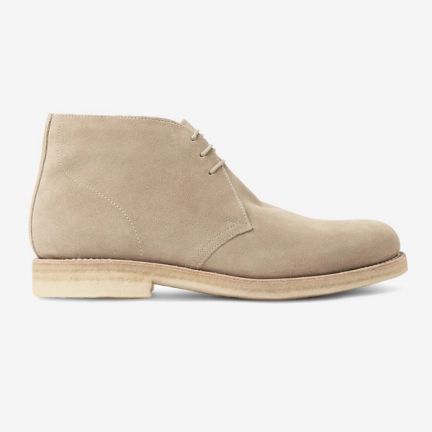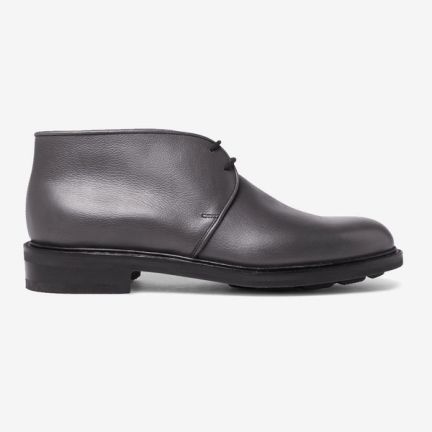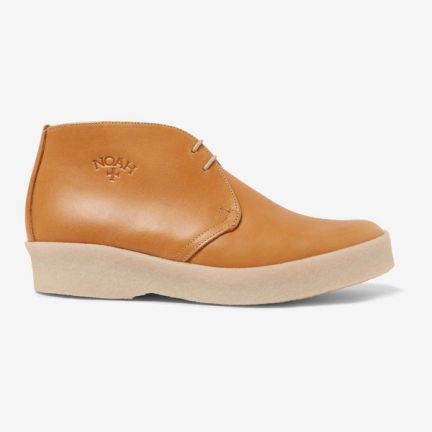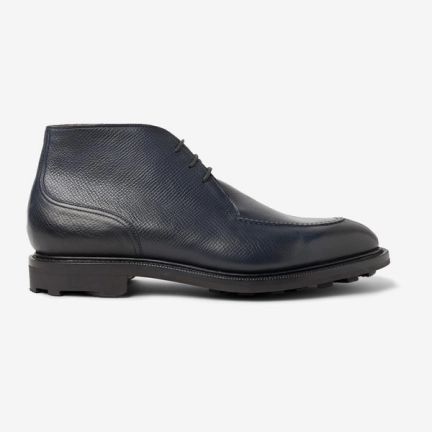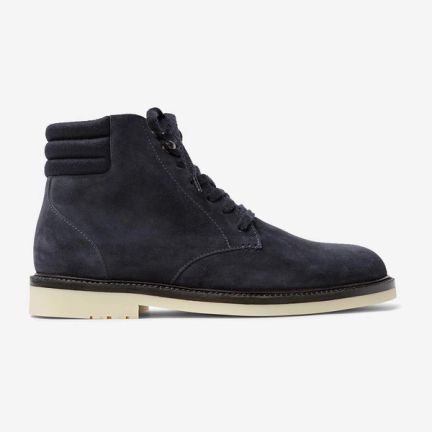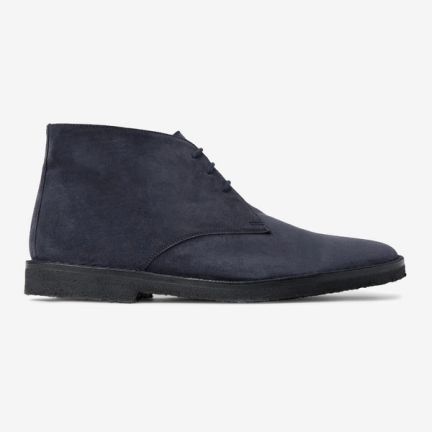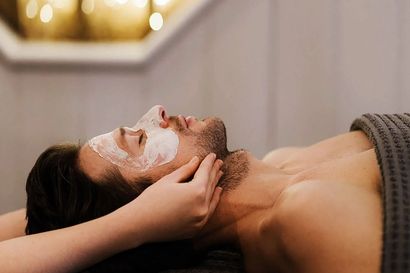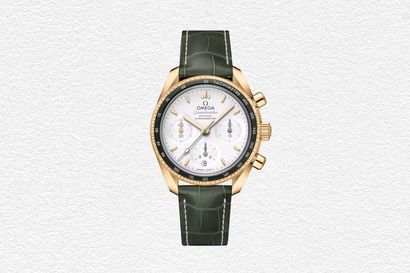The history of the desert boot, and the pairs you should be wearing
With their footing in the Second World War, the desert boot is the heritage shoe you need to own
In 1941, during the Western Desert Campaign of World War II, a young infantryman of the Eighth Army was deployed to Burma. During his platoon’s down time, the soldier noticed his fellow officers were wearing odd shoes – beige or sand-coloured variants of ankle boots.
With a lightweight design, suede upper and crepe sole, the young man learned that these shoes had been originally created by the cobblers of Cairo’s Khan el-Khalili bazaar, when clumpy military issue boots had failed visiting soldiers in the desert environment.
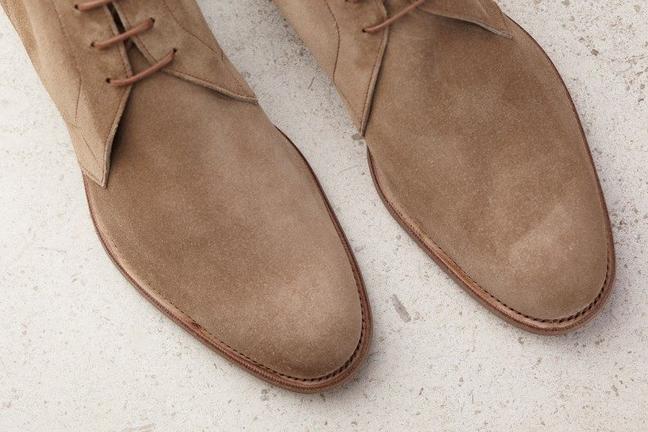
The infantryman – whose name, incidentally, was Nathan Clark of the Clark’s shoe dynasty – committed the design to memory, and took it back to Britain after the war. By the time the 1949 Chicago Shoe Fair rolled around, the footwear giants had created their own take on the desert boot, and saw its popularity soar during the 1950s.
Durable, simple and effortlessly stylish, the bazaars of Cairo gave the world this most functional and fashionable of footwear, and they remain as prevalent in modern shoe stores – Clark’s included – as they did back in the post-war decades. Here are just some of the variants available today…
The crepe-soled classics
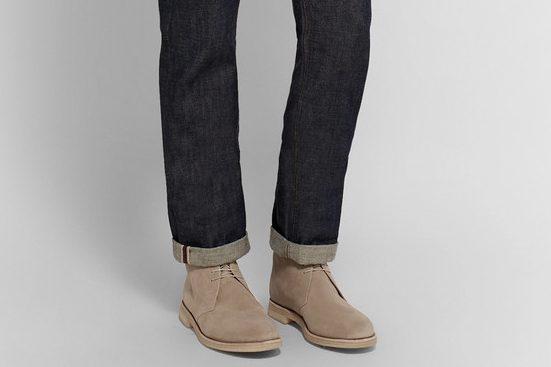
Crepe soles. Why are they so good? The classic desert shoe boasts these hardy foundations, but the reasons why are unclear. Allow us to clear things up. Crepe, which is the colloidal latex separated from rubber during the latter’s refinement, is not only bouncier than your average sole, but also provides a firm grip and better general traction.
True, its quality can vary more so than rubber, and the added flexibility can sometimes be a hindrance if you want a solid base to your shoe – but a desert boot isn’t about that. As such, any of these classic, crepe-soled examples are a brilliant choice, from the traditionally coloured Grensons, through Connolly’s dark brown Italian variants, to the layered crepe soles of Brunello Cucinelli.
Trade in your suede
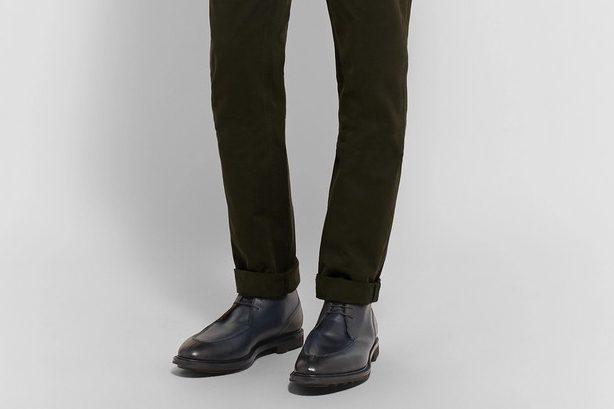
Although suede was part of the original design, not all of us can bank on the weather of Burma or Cairo during our morning commute, or weekend in the countryside. As such, why not trade up your suede uppers for something a little more hardwearing – an exquisitely textured leather.
British footwear stalwarts John Lobb lead the charge, with these lovely simply grey boots, but Noah isn’t far behind with his thick, thick rubber crepe soles and tan leather. Bringing up the rear with exception quality and design is Edward Green, whose Halifax Cross-Grain leather boots have been described as being perfect for an ‘Urban Explorer’.
Opt for a non-traditional colour

Although desert boots, as the name suggest, had suitably traditional desert colours – think sands, stones and beiges – we believe that the design is brought to life even more with a non-conventional hue; such as blue.
These Loro Piana boots push the boundaries of what a desert boot can be, the navy blue Connolly pair keeps the cut classic but the colour anything but, and Cheaney’s Northampton-based boots swap the crepe for Dainite rubber, and the colour for a midnight navy. Effortless cool.
Know your footwear? These are the origins of the equally fashionable monkstraps, and which you should be wearing…

Become a Gentleman’s Journal Member?
Like the Gentleman’s Journal? Why not join the Clubhouse, a special kind of private club where members receive offers and experiences from hand-picked, premium brands. You will also receive invites to exclusive events, the quarterly print magazine delivered directly to your door and your own membership card.
